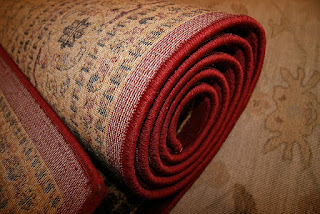Have you had a flooding or a broken pipe in your home? What do you do if you find your carpet has been exposed to or has been under water for a long time?
Don’t worry, most carpets can be saved if addressed as quickly as possible.
And a quick response is vital not just to save your carpet, but for the health of the home occupants too. Water remaining in your carpet becomes a breeding ground for mould in as little as 48 hours. Exposure to airborne mould may trigger symptoms in people with hay fever, asthma, and allergies.
So what are the things you need to do immediately?
1. Turn the water off at the source and be sure to turn off the electricity.
Have a good knowledge of where your main water valve is located and how to turn it off. This would save time, rather than finding out where the leak is.
Don’t step on any wet carpets till you have turned off the power. Water and electricity is a deadly combination.
2. Identify the source of the damage and address it separately.
Find out how the water damage has happened, fix or replace any leaky or broken pipes. Takes steps to ensure that this kind of accident won't happen again.
It is important to identify the source so you can decide on how to take care of your carpet. If it is clean water, then drying your carpets will be easier. However, if its water from your washing machine or sewer pipes, you’ll have to get a professional cleaning company to disinfect the carpet.
3. Remove water as quickly as possible.
If the water is clean and non-contaminated, try to remove as much water as possible off the carpet and out of your home. However, if it is contaminated, don’t risk touching it. Let the experts and their special equipment handle it.
Using a wet/dry vacuum is one of the most effective tools and it can be easily rented.
4. Remove the carpet any other water-logged furnishings if possible.
You will definitely need help to move a wet carpet as it will be much heavier than usual. But it will dry better if it is out in open air.
Check carefully for water damage to any furniture and your flooring. You may need to avail the services of a water remediation company.
5. Ventilate the area.
Vacuuming the carpet and extracting water from it should help reduce it from soaking wet to damp. But you have to keep drying it, as mould and mildew are just waiting to grow there.
Keep all windows and doors open and fans running as this will ensure fresh air circulates.You can limit mould and mildew growth by using a dehumidifier.
6. Steam clean the carpet and check the carpet padding.
To properly sanitize and deodorize the carpet, you must use an effective steam cleaner. You may need to hire professionals to ensure the cleaning process is completed quickly and efficiently.
Thoroughly check the carpet pad under your carpet. If it is soaked through and you cannot remove the moisture through extracting, vacuuming, and dehumidifying, then it must be replaced. Usually, water damaged carpet padding cannot be saved and it will be less expensive than having to re-carpet your home.
7. Clean up and sanitize the affected areas.
Anything touched by the water, including the walls, hard-surface floors should be cleaned thoroughly and sanitized. Most household surfaces can be cleaned with soap and water. Sanitize and disinfect everything with a chlorine bleach solution. Remember to always wear rubber gloves.
If you are in need of a carpet cleaning after water damage, avail of our professional cleaning services. Your carpet will be clean and dry within hours as we use 80% less water than typical steam cleaners. We provide services in Goulburn and all surrounding suburbs.
Call 1800 213 006 or visit http://www.classiquechemdry.com.au/services/carpet-cleaning/



